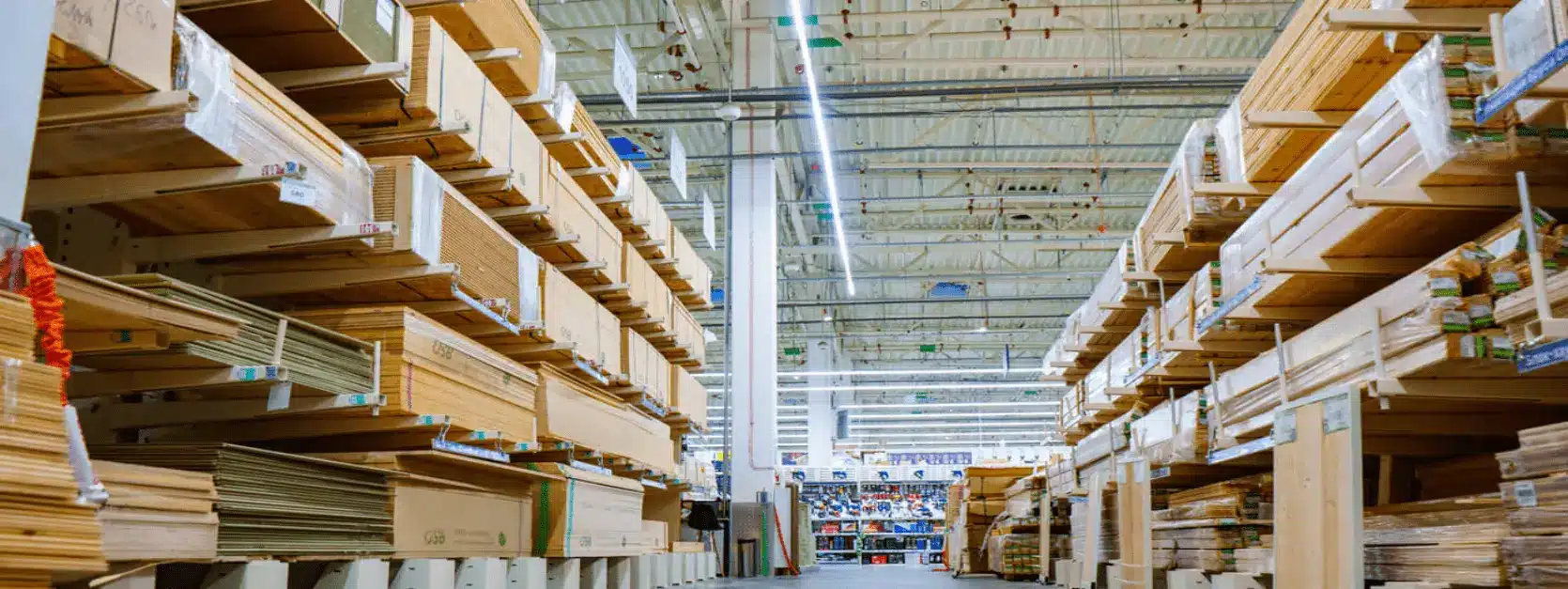Over the past couple years, the pandemic has created chaos on supply chains around the world. Building materials are in short supply and prices have spiked. As a result, we are witnessing increased project and building costs that are affecting contractors, consumers and insurers alike.
“It’s a domino effect,” explains Francis Smith of Cavan Construction in Aston, PA. Cavan is a full-service commercial, concrete construction company that has weathered just about every industry-wide crisis that has come its way in the last fifty years. “As it is with many industries,” Smith maintains, “we are continuing to face supply chain challenges involving the production of materials. A problem that is affecting the industry on many fronts, including the timely production and delivery of products to jobsites worldwide.”
“The supply shortages stem from a conflagration of supply chain interruptions affecting industries around the world, from port congestion in Asia and the U.S. to labor deficiencies at factories around the world,” Smith explains. “Weather conditions in the U.S. continue to influence the market, as well, slowing production of building materials. Additionally, semiconductor deficits have made appliances harder to secure. When there aren’t enough workers available to make products or insure, they ship, and the demand for those products continues to rise, the cost invariable will rise, as well, further contributing to price inflation for consumers and businesses alike.”
Cement and Concrete Grow Pricier
As it turns out, you don’t have to look far for examples of how the supply chain is being impacted. Cement and concrete prices are on the rise. Higher cost of production have jumped dramatically this year and last, up about 14% year-over-year in the third quarter of 2022, according to a report on material pricing and supply chain volatility by Linesight, an Ireland-based global construction consultant.
With production and transportation costs unlikely to ease markedly, cement and concrete prices will remain close to current highs, according to the report. This is in large part due to the fact that supply chain problems continue to escalate, according to an Associated General Contractors of America update on construction materials. By example, barges on the Mississippi River have been shelved by drought-caused low water levels, limiting movement of cement and other heavy construction materials. Contractors in Chicago and Milwaukee have reported that they are being put on allocations of cement as low as 60% of 2021 deliveries.
 David Vanderhider
David VanderhiderIn Texas, winter storm Uri in February 2021 caused certain cement manufacturers to shut down, resulting in a shortage of cement, said David Vanderhider, a member at Dykema, a Detroit-based law firm. With the demand exceeding supply, cement prices rose, and other manufacturers were compelled by efforts to increase supply.
About 43 states are reporting supply shortages of cementitious material, according to the Portland Cement Association.
Meanwhile sand, which is essential for concrete, has more than doubled in price to over $10 a ton due to its own global shortage. With shortages everywhere, companies must find solutions to alleviate the problem without any risk to project timelines and injury to workers. Smith has identified several solutions to help manage the supply chain deficits while also paying careful attention to timeline demands.
Timing is Everything
The time it takes to obtain supplies such as glass and steel has lengthened from weeks to months, pressing contractors to extend or postpone construction deadlines. Ambiguity surrounding the availability of materials is confounding construction personnel as they attempt to price out bids and meet project guidelines. Ordering supplies with sufficient lead time for delivery, before their use in projects will help mitigate the risk of having to overpay and delay projects, Smith says.
“It’s more critical than ever to identify and implement alternative delivery methodologies that promote early participation of contractors, subcontractors, and major suppliers on board during the design and engineering phase to collaboratively devise alternative solutions,” Smith explains. “This is the ideal approach and must be implemented to secure on time delivery.”
A large part of the quandary is the lack of cooperation among key entities. This is particularly true in a typical design-bid-build project, Smith says. Lack of understanding of the availability of materials, or their long lead times, during the design phase can lead to significant project delays and budget overruns. Due to the panic, being displayed, by some contractors, who are purchasing unnecessary materials, just to maintain stock overruns, is offering nothing but further stress to a supply chain already under siege.
“More critical than ever is the need for construction driven design and integration of the supply chain participants. It is the cumulative knowledge that each of these entities possess that can benefit the project in terms of budget, planning and efficiency,” Smith says. This necessitates alternative project delivery methods like Integrated Project Delivery, (IPD) a delivery method that seeks efficiency and involvement of all participants (people, systems, business structures and practices) through all phases of design, fabrication, and construction. As well as the Construction Management at Risk (CMAR) model, where a recipient, or subrecipient, hires a construction firm or construction manager early in the design and planning process to later oversee the project’s construction.
These methodologies involve the retention and integration of key builders early in the design and engineering stages. Through true collaborative efforts, designers and builders can explore innovative ideas that are more sustainable and will provide the impetus to overcome the unprecedented challenges that are currently confronting the industry. As a result, assessments on alternative materials and delivery methods, can be implemented early on, allowing for a more economical, time-efficient build to occur on a more routine manner without placing additional stress on the supply chain.
Metals Mitigate in Production
The global supply of construction supplies such as steel, aluminum, copper, and several rare earth elements have been heavily disrupted, not only by Covid, but also as a result of the war between Russia and Ukraine and the slowed economy of mainland China. Because of the disruption, materials such as steel, bar joists and metal trusses, in ceiling and floor support systems, often utilized in large structures like warehouses, are in short supply, making it more expensive to obtain. Although alternative materials, at times, may be expensive, their availability is greater and will help keep projects on time, Smith says. This type of change, however, will require more modernization in materials, detailed documentation, and a more open mindset among all involved.
“Even though certain products have been the staple of the industry for time out of mind, it means nothing when they are in short supply. As such, it is critical that a multidisciplinary approach be implemented incorporating the exploration of alternatives, finding solutions to many of these constraints which otherwise would have been overlooked but for the current restraints upon the industry.” Smith says.
In many cases alternative methods and materials have proven to be sustainable. Smith singles out Georgia Tech’s Kendeda Building as an example. It has earned Living Building Challenge certification, the world’s most ambitious and holistic green building achievement. The structure integrates wood from sustainably managed forests, reclaimed resources, and other sourcing approaches, drastically reducing its embodied carbon emissions. By eliminating 99% of its construction waste and integrating salvaged, locally sourced materials such as reclaimed wood for the structural decking and salvaged slate tile in the restrooms, the project diverted more waste from the landfill than it sent to the landfill. Improved interest in designing more energy efficient, resilient buildings is expected to fuel growth in the green construction industry, particularly as the government looks to spur investment in these projects through new incentives.
Lack of Labor Proves Costly
But insurance specialists in the space say supply chain disruptions and a lack of qualified labor could result in unforeseen accidents, prompting lawsuits over construction site injuries. This is not to mention the unknown exposures of newer construction materials that could limit coverage capacity and also delay projects. “Current shortage of materials and skilled labor add to long-term challenges around new design, materials and building methods driven by sustainability and net zero strategies,” Allianz Global Corporate & Specialty said in its recent “Managing the New Age of Construction Risk” report.
 Alicia Pavelko
Alicia PavelkoFrom vegetative roofs to mass timber buildings to advanced solar panel technology, the green building space is evolving rapidly.
While the green building concept itself isn’t new, said Alicia Pavelko, head of Construction Innovation and Sustainability at Zurich North America, new technology, materials, and construction methods bring unforeseen risks.
“The vast majority of the new ‘sustainable’ or ‘green energy’ production plants being built are utilizing new and emerging technology. The underwriters and carriers do not have the luxury of years of rigorous testing and use to see how the product performs and what delineates a good versus a bad risk,” she said. As such, insurers are taking a more conservative approach to deploying capacity in this space, Pavelko said, and are “being prescriptive with the use of amendatory endorsements to protect themselves from unanticipated catastrophic exposure.”
Blanca Berruguete, Global Industry Solutions director for Construction at AGCS, said green buildings are custom made compared with those using conventional construction where everything has been done the same way for years and the risks are known.
AGCS sees green construction as the way forward and is committed to the space in terms of coverage and capacity, Berruguete said. However, brokers are still struggling with large risks that require multiple carriers to fulfill the needed capacity. “Not every business can deploy capacity for complex risks, where the material is unknown or where claims are massive,” she said. “Capacity in this insurance market is very hard to find these days.” Business interruptions caused by material damage have led to many costly and complex claims in green building construction, Berruguete said.
These claims create two issues for carriers — the expense of replacing the damaged material and the amount of time it takes to replace that material, especially given current supply chain issues, she noted.
“The insurance company pays when your activity is stopped and sometimes that cover is far more expensive than the material damage itself because of the necessity to stop work at the site,” she said. Fines imposed by government regulators can also increase the cost of these claims. Which is why it’s critical for insurers to look at the complete lifecycle of a project and understand how a green building project may differ from one using conventional and established means and methods, said Pavelko, adding, “the details matter.”
David Laks, vice president/Eastern Canada manager for Hub International’s Risk Services Division, said carriers are scrutinizing all construction projects more closely, not just green building. But he does see underwriters becoming more comfortable with certain types of green building projects that, at one time, were very hard to insure, such as vegetative or “green” roofs. These are designed to reduce a building’s energy consumption, catch stormwater run-off and provide noise reduction, according to Hub.
Carrier inclinations for green building projects are largely reliant on the situation, he said. “There’s a lot more scrutiny put on a retrofit than on a green installation on a new build … because there’s other aspects you have to look at,” Laks said.
From an exposure perspective, AGCS views certain new building materials or methods of construction it isn’t familiar with as “prototypes,” Berruguete said. Underwriters work closely with brokers and clients to learn about the new method of construction or material before they will be comfortable insuring the risk.
“There’s always this collusion when it comes to exposure and innovation,” she said. “The more information clients can share with us, the better we can understand what they’re doing.” That partnership is critical to providing better policy terms and conditions, she said. “Right now, challenges are everywhere for construction because it is booming,” she said. “What we need to know, as insurers, is more about the clients. The more you can tell me about what you’re doing to confront all these challenges, the more assurance I can have to deploy massive capacities. It’s a trust relationship.”
Despite everyone’s best efforts, we are all at the mercy of 2023 supply chain activity. As commercial builders, the best we can do is take a proactive approach to procurement and scheduling. We must remain flexible and understand that sometimes, delays will be completely unavoidable.
 Howard Frederick
Howard FrederickHoward Frederick is a Partner in The Platta Law Firm, PLLC in New York City. He is a member of America’s Top 100 High Stakes Litigators.
He won the #1 Medical Malpractice Verdict and the #1 Motor Vehicle Passenger Verdict in the State of New York in 2012, by New York Law Journal. His $6.6 million dollar verdict was featured in New York Law Journal June 30, 2017, and he is a member of the New York State Trial Lawyers Association.


